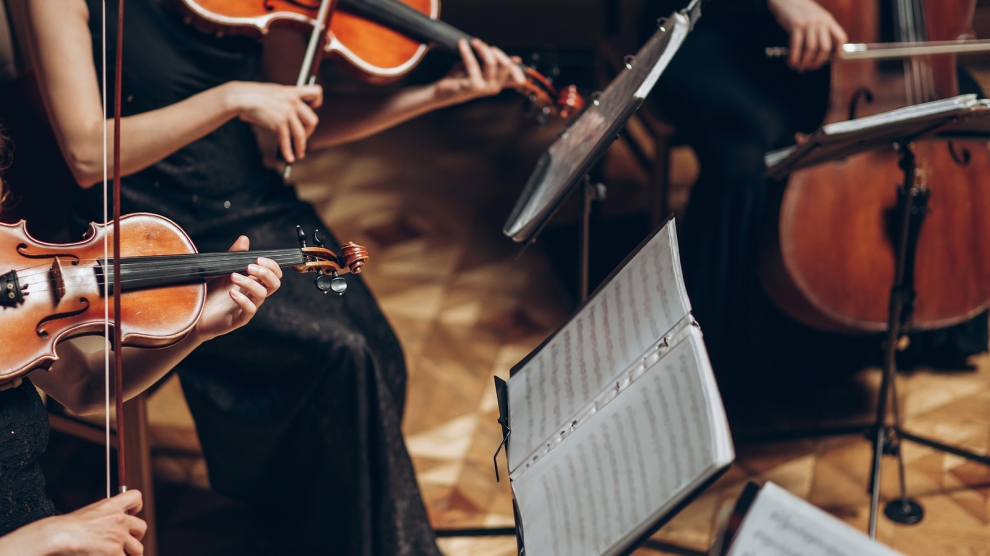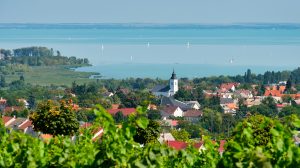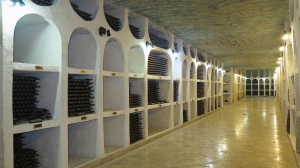From August 27 to September 24, the Romanian capital Bucharest will play host to one of Europe’s most celebrated classical music festivals.
The now bi-annual George Enescu International Music Festival, named for Romania’s greatest composer, George Enescu is an extravaganza of concerts and wonderful music.
It is comparable—in its desire to bring music to as wide an audience as possible—to the BBC Proms.
- Five great Yugoslav 1980s synth-pop albums
- The world’s first carbon-neutral album comes from Poland
- Ghedtair Composite: The diaspora project reworking Armenian folk music
This year’s festival is the biggest ever, and while as usual centered on the Romanian capital Bucharest it will feature parallel concerts and recitals held all over Romania, in Cluj, Iași, Timișoara, Sibiu, Bacău, and Lugoj.
George Enescu
George Enescu—known in France, where he lived and worked for much of his life, as Georges Enesco— was born in 1881, in Liveni, near Botoșani in northeastern Romania. A child prodigy, Enescu created his first musical composition at the age of five, shortly after which he was admitted to the Vienna Conservatory, where he studied with—amongst others—Joseph Hellmesberger Jr, Robert Fuchs and Sigismund Bachrich.
He graduated before his 13th birthday, and in 1895 went to Paris to continue his musical education. He studied violin with Martin Pierre Marsick, harmony with André Gedalge, and composition with Jules Massenet and Gabriel Fauré.
It was while he was in Paris that he wrote his two Romanian Rhapsodies (1901–2), heavily influenced by Romanian folk music. His other major work, the opera Oedip, was not written until 1936. He also wrote five symphonies (two of them unfinished), the symphonic poem Vox Maris, and a series of chamber music.
In 1923 Enescu made his American debut as a conductor in a concert given by the Philadelphia Orchestra at Carnegie Hall in New York, and he subsequently made frequent return trips to the United States. It was in America, in the 1920s, that Enescu was first persuaded to make recordings as a violinist. He also appeared as a conductor with many American orchestras, and in 1936 he was one of the candidates considered to replace Arturo Toscanini as permanent conductor of the New York Philharmonic.
In 1935, he conducted the Orchestre Symphonique de Paris and Yehudi Menuhin (who had been his pupil for several years from 1927) in Mozart’s Violin Concerto No. 3 in G major. He also conducted the New York Philharmonic between 1937 and 1938.
In 1939 he married Maria Rosetti (known as the Princess Cantacuzino through her first husband Mihail Cantacuzino), a close friend of Romania’s Queen Marie. It is worth noting that while staying in Bucharest, Enescu did not live—as popular wisdom would have it—in the Cantacuzino Palace on Calea Victoriei (now the George Enescu Museum, dedicated to his work). The couple in fact lived in a smaller property to the rear of the main building. Enescu spent most of World War II in Romania, but was in Paris at the time of Soviet occupation of the country in 1944, and did not return.
On his death in 1955, Enescu was interred in the Père Lachaise Cemetery in Paris. Today, besides the museum to his music and memory, the Symphony Orchestra of Bucharest and the George Enescu Festival carry his name. Bacau International Airport is also named for him.
The festival
The festival that celebrates Enescu was first held in 1958, and was founded by Enescu’s friend and sometime collaborator, the conductor George Georgescu.
That first event became legendary for two things: a performance of Bach’s Concerto for Two Violins with Yehudi Menuhin and David Oistrakh as soloists, and a staging of Enescu’s sole opera, Oedip, with Constantin Silvestri conducting.
The festival was initially held every three years, becoming a bi-annual event in only in 2001.
Besides performances, the festival also features a competition element for young conductors and soloists. The work of Enescu himself remains central to the festival, and its international appeal and importance—which guarantees the attendance of the world’s finest performers—is an all too rare chance for Romania to present a genuinely positive image of itself on the world stage.
Put simply, no other event regularly held in Romania can match the Enescu Festival’s prestige.

Enescu 2023
The unquestionable highlight of this year will be two concerts by the London Symphony Orchestra on August 30 and 31: the latter concert will feature work by Enescu himself.
“For many members of the public this may be their first and only chance to attend such a concert,” says Cristian Măcelaru, the festival’s artistic director.
Other orchestras performing this year include the Maggio Musicale Orchestra and Choir, the Capitole Theatre Orchestra, the Israel Philharmonic Orchestra, the Vienna Philharmonic Orchestra and the Bavarian State Opera Orchestra.
The festival will be opened by the George Enescu Philharmonic on August 27 at the Sala Palatului: Măcelaru will himself conduct Enescu’s Romanian Rhapsody as well as works by Dvořák and Strauss.
A series of Midnight Concerts (all taking place at the splendid Romanian Atheneum and starting at 10:30pm) begins on Friday, September 1, with a recital by soprano Olga Peretyatko alongside tenor Marius Vlad Budoiu, accompanied by pianists Matthias Samuil and Horea Haplea.
“These midnight concerts are not traditional recitals; it is a type of concert that pushes the boundaries of classical music,” adds Măcelaru.
The full festival programme is online at festivalenescu.ro. Note that many of the more important concerts—especially those featuring the world’s best orchestras—sold out as soon as tickets went on sale earlier in the year.
However, there are more than 200 events in all, and the chances are that you should be able to grab tickets for some events as late as the day of the performance itself.
Unlike many news and information platforms, Emerging Europe is free to read, and always will be. There is no paywall here. We are independent, not affiliated with nor representing any political party or business organisation. We want the very best for emerging Europe, nothing more, nothing less. Your support will help us continue to spread the word about this amazing region.
You can contribute here. Thank you.







Add Comment